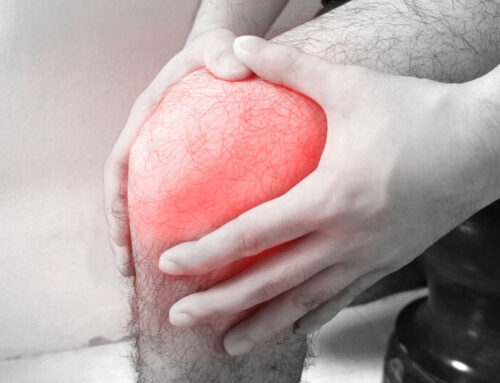
Best Autumn Activities to Naturally Ease Chronic Pain
Autumn is a season full of beautiful foliage, cooler temperatures, and cozy days. While the season feels magical, the drop in temperature can sometimes trigger chronic pain. The stiffness, discomfort, and fatigue that accompany these changes might make you want to hibernate indoors. But here’s the good news: autumn offers plenty of opportunities to stay active, healthy, and comfortable. By incorporating a few simple activities, you can reduce chronic pain and enjoy the season to its fullest.
Let’s explore some healthy activities tailored for this time of year that can help manage chronic pain effectively.
Embrace Gentle Outdoor Exercises
Autumn’s mild weather makes it perfect for light outdoor exercise, which can significantly ease chronic pain. Moving your body helps release endorphins—natural painkillers—and keeps joints flexible.
Walking in Nature
Take advantage of the scenic beauty by walking in nearby parks, gardens, or nature trails. A gentle walk can reduce stiffness and improve circulation, which is key for pain management. The fresh, crisp air and colorful leaves offer a therapeutic experience that benefits both mind and body.
- Tip: Start with 15-minute walks, and gradually increase the time based on your comfort level. Wearing proper shoes and dressing in layers will keep you warm and pain-free.
Simple Yoga and Stretching
Yoga is a fantastic way to alleviate chronic pain while improving flexibility and muscle strength. In autumn, practicing yoga outdoors allows you to connect with nature, which enhances relaxation and reduces stress.
- Try gentle poses like child’s pose, cat-cow stretch, or seated forward bends. These poses help release tension in your spine, hips, and legs.
- Stretching exercises loosen stiff joints and muscles, preventing further discomfort.
By staying active, you can maintain mobility and manage your chronic pain symptoms effectively.
Warm Autumn Foods to Relieve Pain
The food you eat plays a vital role in controlling inflammation, which is often the root cause of chronic pain. Autumn’s seasonal produce and warm beverages are not only comforting but also help fight pain.
Anti-Inflammatory Seasonal Foods
Stock up on fresh, autumn-harvested foods rich in antioxidants and anti-inflammatory properties:
- Pumpkins and squash: These are high in beta-carotene and vitamins that combat inflammation.
- Sweet potatoes: Packed with potassium and fiber, they help reduce muscle cramps and discomfort.
- Apples and pears: High in antioxidants and flavonoids that naturally soothe inflammation.
Add these foods to soups, stews, and roasted dishes for a delicious and nutritious way to support your health.
Herbal Teas and Healing Benefits
Nothing beats sipping a warm cup of tea on a crisp autumn day. Certain herbal teas can relieve chronic pain and calm your body.
- Turmeric tea: Contains curcumin, a natural anti-inflammatory compound that reduces joint pain.
- Ginger tea: Known for its ability to ease muscle pain and digestive discomfort.
- Chamomile tea: Helps relax muscles and improves sleep, which is essential for pain management.
Including these foods and beverages in your autumn routine can make a noticeable difference in reducing inflammation and chronic pain.
Mindful Meditation and Breathing Exercises
Chronic pain isn’t just physical; it also affects your mental well-being. Mindfulness practices, such as meditation and controlled breathing, can help you relax, lower stress, and reframe how you experience pain.
How Mindfulness Reduces Chronic Pain
Mindfulness meditation trains your brain to focus on the present moment, helping to reduce the emotional distress associated with pain. Studies have shown that practicing mindfulness can help lower pain intensity and improve mental health.
- Tip: Start small by dedicating 5-10 minutes daily to meditation. Use guided meditation apps or listen to calming music to enhance focus.
Guided Breathing Exercises
Breathing techniques are another effective way to calm your body’s stress response and reduce pain sensations.
- Deep breathing: Sit comfortably, inhale deeply through your nose for 4 seconds, hold for 4 seconds, and exhale slowly through your mouth. Repeat for 5 minutes.
- Diaphragmatic breathing: Focus on expanding your belly rather than your chest while inhaling, which relaxes muscles and reduces tension.
Incorporating mindfulness and breathing exercises into your autumn routine can provide powerful relief and make you feel more in control of your chronic pain.
Enjoy Fall Gardening
Gardening may seem like a gentle hobby, but it’s actually a form of low-impact exercise that offers immense physical and mental health benefits.
Gardening as Light Exercise
The bending, stretching, digging, and planting involved in gardening help keep your muscles and joints active without overexertion. Gardening movements improve flexibility, balance, and strength, making it a great option for those with chronic pain. Plus, the satisfaction of nurturing plants provides a sense of accomplishment and joy.
The Mental and Physical Health Benefits
- Spending time outdoors in the fresh air reduces stress and boosts mood.
- Engaging with soil has been linked to increased serotonin levels—a natural antidepressant that helps with pain perception.
- You can grow anti-inflammatory herbs like rosemary, basil, and lavender, which can be used in cooking or teas.
Tip: Use tools with ergonomic handles to reduce strain, and take breaks to prevent overworking your joints. Even short sessions in the garden can have lasting benefits.
Explore Warm Water Therapy
When the weather cools down, warm water therapy can be a game-changer for easing chronic pain. Water-based activities can soothe sore muscles, reduce joint stiffness, and provide a calming, relaxing experience.
Benefits of Warm Water Therapy
Warm water improves blood flow, relaxes tense muscles, and reduces inflammation, making it an excellent remedy for pain relief. This type of therapy is particularly beneficial for individuals with arthritis, fibromyalgia, or back pain.
- Soaking in a warm bath or hot tub for 20-30 minutes can ease muscle tension and stiffness. Adding Epsom salts can amplify the benefits, as magnesium helps relax muscles and reduce pain.
- Visiting a heated pool for light water exercises or aquatic therapy can take the pressure off your joints. Movements in water are gentle on the body, reducing pain while improving flexibility and strength.
At-Home Warm Water Practices
If you don’t have access to a pool, create a relaxing spa experience at home. Fill your bathtub with warm water, add Epsom salts or a few drops of lavender essential oil, and unwind. You can also try warm compresses on specific pain-prone areas like your neck, back, or shoulders for quick relief.
Incorporating warm water therapy into your autumn routine can provide soothing relief while keeping your body mobile and pain-free.
Engage in Creative Hobbies Indoors
When it’s too chilly to spend long hours outside, engaging in creative hobbies indoors can be just as therapeutic. Activities like art, crafting, or cooking are gentle on the body yet highly rewarding for the mind and soul.
Art and Crafting for Pain Relief
Creative activities such as painting, knitting, or coloring can serve as natural stress relievers. The repetitive motions and focus required for these tasks shift your attention away from pain and allow your brain to relax.
- Knitting or crocheting improves dexterity and hand strength, which can help those with arthritis or joint pain.
- Journaling or scrapbooking encourages self-expression and emotional release, helping you cope with the mental toll of chronic pain.
Cooking and Baking Seasonal Delights
Cooking isn’t just about preparing food; it’s an activity that stimulates your senses and keeps you active. Try cooking or baking warm autumn favorites like hearty soups, roasted vegetables, or spiced desserts.
- Use ingredients with anti-inflammatory properties, such as turmeric, cinnamon, ginger, and garlic.
- Experiment with slow-cooked meals, which are less labor-intensive but incredibly nutritious and comforting.
By engaging in creative hobbies, you stay mentally active while minimizing physical stress, making these activities perfect for managing chronic pain.
Prioritize Restful Sleep with a Cozy Routine
Good-quality sleep is crucial for anyone dealing with chronic pain. Unfortunately, pain can often interfere with sleep, creating a cycle of discomfort and fatigue. Autumn is the perfect time to create a cozy bedtime routine that promotes deep, restful sleep.
Build a Relaxing Evening Routine
- Warm baths before bed: As mentioned earlier, a warm soak helps relax muscles and ease tension, preparing your body for sleep.
- Herbal teas: A cup of chamomile, valerian root, or peppermint tea can calm your body and mind.
- Comfortable bedding: Invest in soft, warm blankets and supportive pillows to create a cozy sleeping environment. Weighted blankets can also provide comfort by reducing anxiety and improving sleep quality.
Tips to Improve Sleep Naturally
- Stick to a regular sleep schedule, going to bed and waking up at the same time every day.
- Limit screen time at least an hour before bed to reduce exposure to blue light, which can disrupt your sleep cycle.
- Practice deep breathing or meditation for 5-10 minutes before bed to calm your mind.
By prioritizing sleep, you allow your body to recover, which helps reduce pain levels and boosts overall well-being.
Take Advantage of Vitamin D
With shorter days in autumn, it’s easy to experience a drop in vitamin D levels. However, this “sunshine vitamin” is crucial for reducing chronic pain and maintaining strong bones and muscles.
Why Vitamin D Matters
Low levels of vitamin D are linked to increased pain sensitivity, fatigue, and weakened immune systems. For individuals with chronic pain conditions like fibromyalgia or arthritis, maintaining adequate vitamin D is key to feeling your best.
How to Get More Vitamin D in Autumn
- Spend time outdoors: Even on cooler days, a 15-20 minute walk during midday can help your body produce vitamin D naturally.
- Eat vitamin D-rich foods: Incorporate foods like salmon, egg yolks, fortified milk, and mushrooms into your diet.
- Consider supplements: If it’s difficult to get enough vitamin D from sunlight or food, talk to your doctor about taking a supplement.
Ensuring you have enough vitamin D can improve your mood, energy, and pain management during the autumn months.
Conclusion
Autumn is a season of change, and it can also be a season of healing if you embrace the right activities. From gentle outdoor exercises and warm water therapy to creative hobbies and mindful meditation, there are countless ways to ease chronic pain while enjoying everything this beautiful season has to offer. By eating anti-inflammatory foods, prioritizing sleep, and spending time in nature, you can keep your body and mind strong, healthy, and pain-free.
Don’t let chronic pain hold you back—take advantage of these simple yet effective tips to feel your best this autumn.
FAQs
1. What are the best outdoor activities for chronic pain relief in autumn?
Walking, light yoga, and gardening are excellent low-impact activities that help improve flexibility and reduce pain.
2. Can warm water therapy really help with chronic pain?
Yes, soaking in warm water relaxes muscles, improves circulation, and reduces inflammation, making it ideal for pain relief.
3. What foods should I eat during autumn to reduce chronic pain?
Focus on anti-inflammatory foods like pumpkins, sweet potatoes, turmeric, ginger, and leafy greens to fight pain naturally.
4. How does mindfulness meditation help with chronic pain?
Mindfulness meditation reduces stress and trains the brain to focus on the present moment, helping you manage pain more effectively.
5. Why is vitamin D important for chronic pain relief in autumn?
Vitamin D helps strengthen bones, muscles, and the immune system, which are all crucial for managing chronic pain during cooler months.
Share this article
Follow us
A quick overview of the topics covered in this article.











